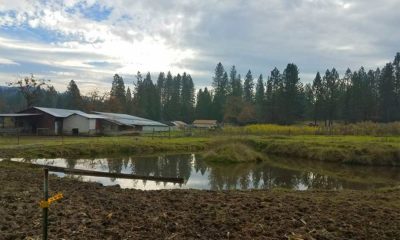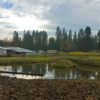Move Over Marijuana: Hemp Had a Good Year Too
More states than ever are opening up to industrial hemp.
Eight out of nine cannabis decriminalization ballot measures passing during the 2016 general election — it was a banner year for cannabis. But while pot puns proliferated in the headlines, marijuana’s botanical cousin saw decidedly less coverage.
Nonetheless, hemp had its milestones too: four states passed some sort of hemp-specific legislation in 2016, several hemp programs were enacted, and three out of four successful adult-use initiatives included hemp in their texts.
Here’s a look at some of the highlights for industrial hemp in 2016.
Colorado
Colorado was an early leader in industrial hemp cultivation, with the state setting up a regulatory framework in 2014. But when farmers started growing the newly legal crop, they ran into a bit of trouble: their crops had to contain THC levels under 0.3 percent. If their plants produced more of the cannabinoid than was allowed, they had to be destroyed.
To help farmers avoid this situation, Colorado’s Department of Agriculture produced the nation’s first certified hemp seeds in 2016. There are currently six varieties of hemp seeds certified by the state for their consistent low THC production.
All hemp-legal states (except for West Virginia) set the THC limit of hemp at 0.3 percent. Thankfully, farmers in any state that allows industrial hemp cultivation can now purchase qualifying seeds from Colorado.
West Virginia
In West Virginia, cannabis qualifies as hemp if it has no more than 1 percent THC. In May 2016, the state’s first cannabis crop since World War II was planted at West Virginia University as part of an industrial hemp research project.
Researchers said at the time that their project would consist of two parts: determining which hemp varieties would thrive in the state’s soil and climate, and assessing those same varieties for their ability to accumulate metals that have contaminated the soil.
Cleansing the Soil
They don’t call it a miracle crop for nothing. Phytoremediation — a soil cleansing process naturally performed by cannabis plants — is just one of the environmentally friendly uses of hemp. The plant can also be used in biofuels, plastics, and energy efficient building materials.
Conservatives Coming Around
Another sign of the changing times is the willingness of conservative states to pass sensible cannabis-related legislation. North Dakota’s first industrial hemp crop was also harvested last year, to much success. While the program is still small – five growers are part of the state’s pilot program – the yields were good and profits margins were high.
Even the Bible Belt is coming around to the crop: Alabama passed legislation to legalize industrial hemp in 2016, creating a pilot program for research like that of West Virginia. The bill also removed industrial hemp from the state’s definition of “marijuana.”
Thirty states now have some sort of industrial hemp law on the books. With the latest legislative successes for cannabis, let’s hope many more will join them in 2017.
Originally published in Issue 25 of Cannabis Now. LEARN MORE
TELL US, do you support the legalization of hemp through purchasing hemp products? Which ones are your favorite?


























